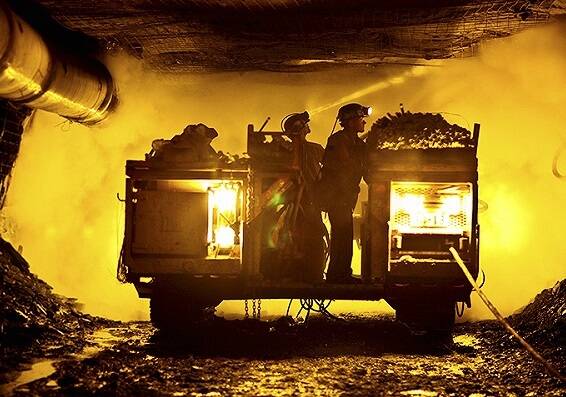The ability to leverage reliable and flexible communications systems is becoming increasingly important, driven by challenges such as volatile commodity markets, declining ore grades, rising energy costs and extreme operating conditions. Leading mine operators have embarked on digital transformation as they look to create “connected mines”. Based on the necessary communications required for daily operations in mines, as well as the application and system layers that leverage large-scale IoT sensor networks, the future of the mining industry is certain to be safer, smarter, and more efficient. In fact, the World Economic Forum predicts that the industry will add $425 billion in value over the next five years through digitization.

Here are five ways IoT in mining can improve safety, secure payloads, reduce operational delays and provide real-time data for intelligent decision-making:
1. Discharge and groundwater level monitoring
Diesel exhaust from underground excavation equipment and drilling machines contains toxic gases and particulates that pose serious health risks. Through the use of fixed and mobile gas detectors and particle sensors, emission levels and threshold limits can be effectively controlled to maintain a safe working environment that meets safety standards.
Chemical residues from mining operations have the potential to contaminate groundwater and cause serious environmental problems. Using data from level sensors, mining operators can track real-time changes in mine groundwater levels, especially during rainfall events. Water can be pumped promptly and efficiently to prevent excessive inflows, thereby avoiding pollution and underground flooding.
2. Ventilation on demand
Ventilation can account for 30~40% of energy consumption in underground mines. By supporting on-demand ventilation systems, IoT sensors can be used to continuously monitor air quality and airflow in different areas of the mine to remotely adjust fan speeds. Transmitting data from occupancy sensors or miner registration data from NFC tags can also ensure that ventilation in the workspace where miners are located is activated. This will result in significant energy savings, significantly reducing operating costs and environmental footprint.
3. Wearable device-based incident reporting and rock bolt monitoring
As we all know, mines are one of the most dangerous working environments, with high risks of explosions, equipment accidents and exposure to toxic substances. Ensuring the health and safety of miners has always been a huge challenge. With the help of IoT wearables, miners’ health and working environment (i.e. temperature, humidity, radiation, noise and gas levels) can now be tracked in real time. Managers receive immediate notifications of incidents of fatigue, exhaustion and “overload” among their workers, while miners receive timely warnings of potential hazards. Similarly, sensors that monitor seismic activity in underground mines could be installed on rock bolts to effectively assess their integrity and reduce the risk of fatal collapses.
4. Monitoring after blasting
After blasting inside a mine, the area is often filled with toxic fumes and debris. Waiting for hours to ensure the smoke has completely dissipated can lead to costly downtime. With wireless environmental monitoring systems, operators and miners can know at any time whether an area is safe enough to resume work. This reduces unnecessary waiting time, allowing for faster work and increased productivity after blasting.
5. Asset tracking, remote diagnosis and predictive maintenance
As an asset-intensive industry, mining requires a wide variety of equipment, from drills, excavators and conveyors to pumps, motors and fans, which are widely distributed above and below ground. Wireless IoT sensors that monitor and track critical asset parameters such as pressure, vibration, flow and temperature, as well as engine performance, enable real-time remote diagnostics, troubleshooting and asset tracking throughout the mine site. Combined with analytical models, corrective maintenance and spare parts procurement can be effectively planned to prevent equipment downtime and help companies avoid costly production losses.
Wireless connectivity for connected mines
While connectivity is key to data collection in connected mines, remote locations, extreme depths, confined spaces and asymmetric mine topologies present the most unfavorable conditions for data communication. Wired networks have limited coverage, are expensive and are highly susceptible to the physical impacts of mining equipment operating underground. Additionally, cellular and short-range solutions such as Wi-Fi cannot provide adequate coverage and reliable signals underground and in massive, hard-to-reach mines.
The third generation low-power wide area network (LPWAN) targets low-bandwidth, low-computing end nodes to provide energy-efficient and cost-effective IoT connections in complex remote industrial environments. No wireless category currently beats LPWAN in terms of battery life, equipment and connectivity costs, and ease of implementation. As the name suggests, LPWAN nodes are designed to run on independent batteries for years, rather than just a few days like other wireless solutions. They can also transmit for many kilometers while providing deep penetration capabilities to connect devices in hard-to-reach indoor and underground locations, making them the ideal technology to support the IoT in the mining industry.
Schlüsselwörter: Analog output module